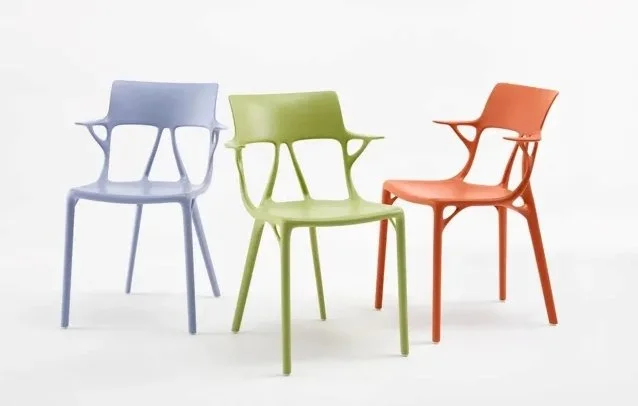Imagine a world where designers and AI work hand in hand, pushing creative boundaries and optimizing workflows. That future is already here. AI is not a replacement for human ingenuity—it’s a tool that amplifies it, and those who master it will shape the next era of design.
All tagged Design
Engineering versus Design
Engineering and Design are two very similar designs when it comes to product creation. Andrew Cousins explores the division between the two fields and offers some ideas on how to be a more well-rounded problem solver.
Decomposition in Design
I immediately realized that decomposition could be translated into other aspects of life. It became an essential part of how I view and approach any problem.
Minimalism in Design– Understanding Your Scope
The relationship between scope and minimalism doesn’t hold true in every case, but if you observe brands, you will definitely notice a pattern: the minimalism in their logos and their products frequently corresponds to their scope.
Why Study the Design Process?
Why would you undertake a deep study of engineering design, or the design process, when you could go about design on your own and learn from your own experience? There is value to be gained from studying design, and I want to add my own take on why studying design is an important complement to hands-on experience.
Good Design: Wilson Airless Gen1 Basketball
The basketball has had a uniform design for almost 100 years. What happens when a major sporting goods company decides that it is finally time for a change? The R&D team at Wilson put their minds together and came up with a pretty ingenious design.
Design for Manufacturing Series: Subtractive Machining
In an article published a few weeks ago, I gave a brief overview of a variety of manufacturing processes. Now, I will further discuss the first set of processes – subtractive machining.
Good Design: GAN14 Maglev Speed Cube
Humans are obsessed with speed. This need for speed can be found everywhere, including the world’s most high-tech Rubik’s cube.
BYU Campus in LEGO
We challenged dozens of BYU engineering students to design LEGO Architecture-style models of BYU buildings; here you’ll see some of the many outstanding designs that were created. If you’re a current BYU student, an alumnus, or have ever visited the BYU campus, we hope these designs bring back great memories.
Puzzles are a Designer's Best Friend
Everyone loves a good puzzle - especially Designers, Engineers, and Inventors.
Plus ça Change, Plus C'est la Même Chose
In 1848, Jean-Baptiste Alphonse Karr penned the phrase, "plus ça change, plus c'est la même chose" or "the more things change, the more they stay the same". One hundred and seventy-two years later, one could argue that "the more products change, the more the designs stay the same." See how the products of the future are influenced by the designs of the past.
How to Get the Most Out of an Evaluation Matrix
Evaluation matrices are one of the most misused, misunderstood, tools of product development. However, a simple shift in the way we think about them can help us all get the most out of evaluation matrices.
Many Good Design Choices Can Add Up to a Bad Design
A complicated design can usually be decomposed into lots of smaller design choices. But those individual good choices can add up to an overall low-quality design and experience if the bigger picture isn’t continually considered.
Engineering from the Very Beginning
As is customary this time of year, we often think about goals and resolutions associated with the new year. There is something very refreshing about a clean slate and starting over from scratch at the beginning of January.
Five Articles From 2019 You May Have Missed
Read some great articles from 2019 you may have missed on the BYU Design Review.
A Design Review of the Christmas Booby Traps from Home Alone
Ever thought about the design of Kevin’s booby traps in Home Alone? Consider these critiques before you choose how to defend your home this Christmas…
The LEGO Brick
The creation of the LEGO Unit was not only a meaningful piece of LEGO history but rather a fundamental player in modern LEGO design culture. It’s no surprise the market loves this toy. It’s proven so by buying more than 600 billion bricks produced to date. Enough for every person on the planet to have 81 pieces.
Golf Ball Dimples - A Design Feature for Distance
It takes a little curiosity and engineering to make certain features standard on many everyday things. Take a look at how dimples became one on golf balls.
How to Ideate as a Team
Almost all product development is done in a team setting, owing largely to the strongly held belief that the collective thinking of a group outperforms that of “the lone genius."
The First Face of Innovation: The Anthropologist
A designer in the role of an Anthropologist will take the time to really learn about the customer and everything that impacts the customer. Learn about Tom Kelley’s first face of innovation - The Anthropologist.



















